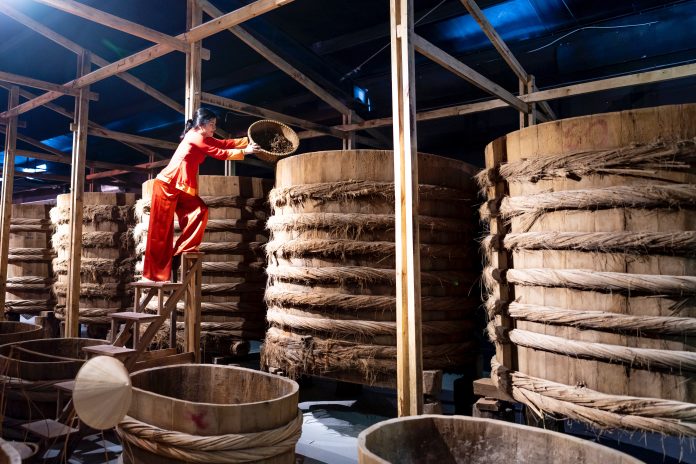I’ll try to make it basic so as not to become too technical. Generally speaking, fermented foods are any food or beverage that has undergone microbial growth modification. Don’t worry, this controlled development enables the conversion of certain food ingredients, which happens because specific enzymes acting upon the Food fermentation process is, and has been for ages, a basic method of food preservation.
We’ll discuss more history later, but for now let’s just say that when people in Korea began burying ceramic pots filled with veggies underground (what we now call Kimchi), they weren’t doing it to improve their gut health or to consume the fad foods.
When most people think of fermented foods, they likely picture yogurt, sauerkraut, kimchi, and almost certainly kombucha. These are typical and may currently be found at numerous supermarkets. However, numerous additional foods are fermented.
What Function Does The Food Fermentation Process Serve?
Looking back over time, it is probably improbable that those individuals knew that fermenting had numerous health benefits over most of its history. Nutritional science was not even a concept; there was no scientific research.
Only relatively recently have scientists had the means to experiment with and study food. Going back in time, the food fermentation process most likely started as an accident. But throughout time, people from all over the world discovered that by adding salt and maybe brine to food, it was possible to preserve it for the hard times and possibly even for a long period.
Let’s get back to the present. Food preservation is not necessary, especially in the relatively affluent West. Almost everyone has access to a refrigerator or freezer, and food is in overabundance. It worries me that certain goods have additives that extend their shelf life to many years.
When a Food Is Fermented, What Does That Mean?
A natural metabolic process called fermentation transforms sugars and starches into acids or alcohols. These natural sugars in the veggies and fruits that are being fermented can be acted upon by bacteria and microorganisms that can be found in the air as well as on the skin of vegetables and fruits.
The majority of the carbohydrates present in the food have been consumed by the Lactobacillus bacteria throughout the fermentation process. Remember the kimchi that has been around for 1200 years? Acids and alcohols work as natural preservatives, extending the shelf-life of the food for lengthy durations.
The lovely natural bacteria known as probiotics, which are thought to be so good for human health, are also encouraged to proliferate by fermentation.
What Alters Veggies Under It?
To sum up enzymes, yeasts, and bacteria break down the sugars and starches in food through the fermentation process. This procedure preserves the food, extending its shelf life, and also creates probiotics, which are good bacteria that can enhance overall health.
The first step in the process is Lacto-fermentation, in which a bacteria called Lactobacillus feeds on the carbohydrates in the food to preserve it and boost its nutritional value.
While raising or maintaining the amounts of vitamins and enzymes that are beneficial to health, the method prevents the growth of dangerous microorganisms.
Additionally, the digestion of the meals you ingest is facilitated by the fermentation process, which functions as a pre-digestion.
So let’s sum everything up. Lacto-fermented vegetables are chopped, sliced, grated, or fermented whole in some cases. Brine is a salty water solution that has been added to foods (for instance, young carrots) and left at room temperature while fermentation takes place.
On many fermenting crocks, a covering of water and a sealed lid with an airlock or water channel is utilized to allow gas to exit but block air (and oxygen) from entering, maintaining anaerobic conditions.
Also, read our article about the “Special dinner dishes“.
The Two Stages Of Fermentation
Moving on from Fermentation of food can be divided into two primary stages.
Primary Stage
The first stage of the fermentation process is known as primary fermentation. By introducing bacteria, usually, Lactobacillus, which feed on these carbohydrates and make lactic acid as a result, it primarily aims to convert glucose into lactic acid.
While preventing or killing other species, this acidic environment promotes the growth of “good” bacteria like lactobacilli.
Secondary Stage
During the secondary fermentation process, lactic acid is converted to various alcoholic beverages, carbon dioxide gas, and esters. The flavor and aroma of the food being fermented are developed during the secondary fermentation phase.
Benefits
The food fermentation process offers various advantages. These consist of:
- Creating healthy enzymes, vitamins, and minerals.
- Increasing flavor and aroma.
- Preventing dangerous germs and encouraging “good” bacteria.
- The enhancement of food’s ability to digest and absorb nutrients.
- In addition to these advantages, some individuals think that meals with a fermentation process might treat ailments like constipation.























